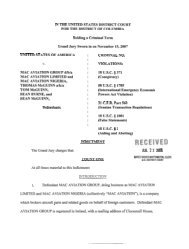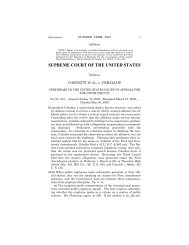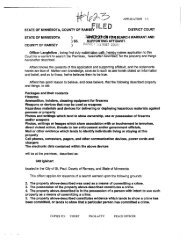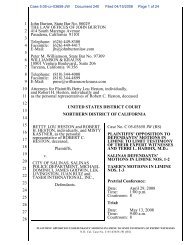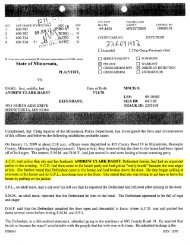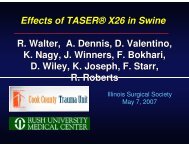TASER Electronic Control Devices Review Of Safety Literature
TASER Electronic Control Devices Review Of Safety Literature
TASER Electronic Control Devices Review Of Safety Literature
Create successful ePaper yourself
Turn your PDF publications into a flip-book with our unique Google optimized e-Paper software.
uli, are inherently protective against such cardiac events along with the lack of<br />
current penetration deep within the torso to reach the heart itself.<br />
In general, skeletal muscle activation by electrical stimulation is elicited by excitation<br />
of α -motor neurons which innervate such muscle fibers. This fact often<br />
comes as a surprise, in that skeletal muscle cells are themselves excitable. Recall<br />
that “rheobase” is defined as the minimum stimulus strength necessary (generally<br />
occurring at long stimulus durations or pulse widths) and “chronaxie” is the<br />
stimulus duration needed at twice the rheobase stimulus strength (as a measure<br />
of how steeply the strength-duration relationship rises for brief stimulus durations).<br />
Excitability of skeletal muscle, per se, is far less than that of their motor neuron<br />
cells in that both rheobase and chronaxie values of skeletal muscle are higher<br />
than those of the myelinated nerve axons which innervate them. Thus there is<br />
essentially zero direct activation of skeletal muscle cells. Sensations of pain, discomfort,<br />
sensory overload, etc. in response to electrical weapon stimuli would be<br />
expected to result from a host of sensory nerve fiber types, to some extent dependent<br />
upon the specific locations of electrical weapon probe attachment to the<br />
body (as well as the specific tissues located between and near the probes in<br />
what might be called the “capture” zone of the probes where excitable cells are<br />
likely activated).<br />
Electrical Stimulation of Motor and Sensory Nerves<br />
Electrical stimulation of motor or sensory nerves can be achieved in general if an<br />
imposed electric field near such nerves is sufficient in amplitude, timing and spatial<br />
extent to depolarize (i.e. shift the cell’s membrane potential in a positive direction)<br />
the cell to “threshold” (where an action potential is elicited). Rattay’s “activating<br />
function” modeling approach to nerve excitation implies that relatively long,<br />
straight cell processes (such as the axons of α-motor neurons which may be up<br />
to 1 meter in length as they pass from their cell bodies out to muscles in the extremities)<br />
are stimulated according to the shape of the E field (i.e. electric field)<br />
imposed along their lengths where changes in the E field (which will also correlate<br />
to changes in the current density J) bring about stimulation. 6<br />
In this brief analysis, however, we will focus only upon a corollary to Rattay’s<br />
theory which also states that where nerve cells start and stop (i.e. at their cell<br />
body or at their connections to other cells such as at skeletal muscle innervation<br />
sites or at the end receptors of sensory cells, etc.) or where such cells bend with<br />
respect to the imposed E field then stimulation thresholds tend to correlate well to<br />
the magnitude itself of the imposed E field (or current density J).<br />
The largest diameter myelinated α-motor neuron axons (which innervate skeletal<br />
muscle fibers) tend to have relatively low electrical thresholds. This is because, in<br />
general, threshold correlates inversely with cell diameter (so larger diameter cells<br />
20




